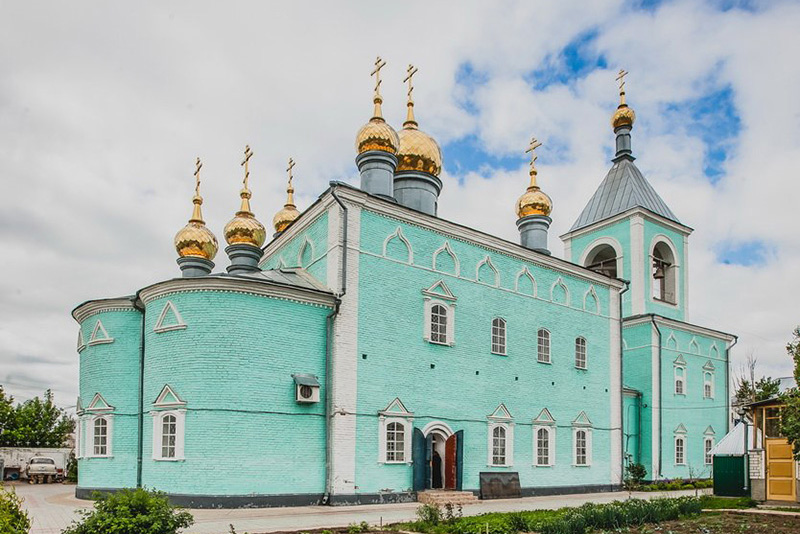
In the southern capital of Kazakhstan, the memory of the Cossacks, victims of repressions of the 20th century, was honored
- 26.01.2024, 11:58
- Новости на английском языке

On January 24, 2024, with the blessing of Metropolitan Alexander of Astana and Kazakhstan, on the day of the 105th anniversary of the beginning of the Cossack genocide, a commemoration of the victims of the Red Terror took place in the Epiphany Church of Almaty.
Deputy Chairman of the Commission for Educational Ministry of the Astana and Alma-Ata Diocese, Priest Alexander Triandofilov, performed the Divine Liturgy and requiem.
During the service, the Cossacks of the “Union of Cossacks of Semirechye” prayed, who confessed and received the Holy Mysteries of Christ.
At the end of the funeral service, Father Alexander delivered a sermon. Ataman of the “Union of Cossacks of Semirechye” V.S. addressed the audience. Shikhotov, Chairman of the Council of Old People V.R. Popov and Coordinator of the Youth Council of the Coordination Council of Organizations of Russian Compatriots in the Republic of Kazakhstan S. Shikhotov.
Perpetuating the memory of those who suffered during the years of political repression in Kazakhstan is part of the implementation of the presidential program “Rukhani Zhangyru”.
On January 24, 1919, the Organizing Bureau of the Central Committee of the RCP (b) adopted the “Circular Letter of the Central Committee on the attitude towards the Cossacks,” which marked the beginning of a terrible and bloody period in the history of the Cossacks. The policy of “de-Cossackization” provided for the mass deportation of citizens: all Cossacks between the ages of 18 and 50 were to be taken outside the Don, Kuban, and Terek to the North. “The process was slowed down only by a chronic shortage of railway cars, so it was decided to destroy them all locally.” The Cossack rivers Don, Kuban, Terek, Ural and others were filled with Cossack blood.” A letter from the Organizing Bureau of the Central Committee of the RCP (b) dated January 24, 1919 put the Cossacks in the position of a “defeated enemy” and actually outlawed them. “Developing these terrible plans for genocide, Trotsky declared at a meeting of commissars of the Southern Front in Voronezh: “Destroy the Cossacks just like that - that’s our slogan. Take off your stripes, prohibit calling yourself a Cossack and deport en masse to other regions.” There are practically no Cossack families that would not be affected by the policy of genocide in one way or another. “It was mainly the peaceful civilian population of villages and farmsteads – old people, women and children – who were burned alive, shot, and deported to Siberia. The document signed by Yakov Sverdlov claimed more than 2 million Cossack lives. By 1926, no more than 45% of the Cossack population remained on the Don. In other troops - up to 25%, in the Ural army only 10%. Many Cossacks over 50 years old, the keepers of traditions, were destroyed and expelled from the country. As the famous publicist and writer Alexander Solzhenitsyn said in his speech in 1995, we are all cruelly guilty before the Cossacks. The genocide of the Cossacks is the greatest tragedy of the 20th century.” The Semirechensk Cossacks fully shared this sad fate.





















